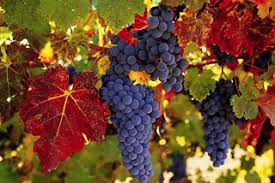by Dwight Furrow
 Wine is a living, dynamically changing, energetic organism. Although it doesn’t quite satisfy strict biological criteria for life, wine exhibits constant, unpredictable variation. It has a developmental trajectory of its own that resists human intentions and an internal structure that facilitates exchange with the external environment thus maintaining a process similar to homeostasis. Organisms are disposed to respond to changes in the environment in ways that do not threaten their integrity. Winemakers build this capacity for vitality in the wines they make.
Wine is a living, dynamically changing, energetic organism. Although it doesn’t quite satisfy strict biological criteria for life, wine exhibits constant, unpredictable variation. It has a developmental trajectory of its own that resists human intentions and an internal structure that facilitates exchange with the external environment thus maintaining a process similar to homeostasis. Organisms are disposed to respond to changes in the environment in ways that do not threaten their integrity. Winemakers build this capacity for vitality in the wines they make.
Vitality, in a related sense, is also an organoleptic property of a wine—it can be tasted. When we taste them, quality wines exhibit constant variation, dynamic development, and a felt potency, a sensation of expansion, contraction, and velocity that contribute to a wine’s distinctive personality. These features are much prized among contemporary wine lovers who seek freshness and tension in their wines. Thus, wine expresses vitality both as an ontological condition and as a collection of aesthetic properties.
However, this expression of vitality in both senses is fading in aged wines. In aged wines, freshness and dynamism can be tasted but only as vestigial as the fruit dries out and recedes behind leather, nut and earthy aromas. Appreciation of aged wines (at least those wines worthy of being aged) requires that we see delicacy, shyness, restraint, composure, equanimity, imperfection, and the ephemeral as normative. Read more »
